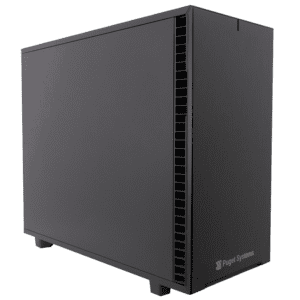In this post I present some Multi-GPU scaling tests running TensorFlow on a very nice system with 8 1080Ti GPU’s. I use the Docker Workstation setup that I have recently written about. The job I ran for this testing was the “Billion Words Benchmark” using an LSTM model. Results were very good and better than expected.
Intel CPU flaw kernel patch effects – GPU compute Tensorflow Caffe and LMDB database creation
The Intel CPU flaw and the Meltdown and Spectre security exploits are causing a lot of concern. There is a possibility of application slowdown from the kernel patches to mitigate the exploits. This slowdown concern is a concern for GPU accelerated application because of the systems calls they require for moving data between CPU and GPU memory space. I did some testing on a couple of large Tensorflow and Caffe machine learning jobs along with the creation of a LMDA database from 1.3 million images.
NVIDIA DIGITS with Caffe – Performance on Pascal multi-GPU
NVIDIA’s Pascal GPU’s have twice the computational performance of the last generation. A great use for this compute capability is for training deep neural networks. We have tested NVIDIA DIGITS 4 with Caffe on 1 to 4 Titan X and GTX 1070 cards. Training was for classification of a million image data set from ImageNet. Read on to see how it went.
Install Ubuntu 16.04 or 14.04 and CUDA 8 and 7.5 for NVIDIA Pascal GPU
You got your new wonderful NVIDIA Pascal GPU … maybe a GTX 1080, 1070, or Titan X(P) … And, you want to setup a CUDA environment for some dev work or maybe try some “machine learning” code with your new card. What are you going to do? At the time of this writing CUDA 8 is still in RC and the deb and rpm packages have drivers that don’t work with Pascal. I’ll walk through the tricks you need to do a manual setup of CUDA 7.5 and 8.0 on top of Ubuntu 16.04 or 14.04 that will work with the new Pascal based GPU’s
NVIDIA Titan GPUs (3 generations) – CUDA 8 rc performance on Ubuntu 16.04
I have a Titan Black, Titan X (Maxwell) and a new Titan X (Pascal) in a system for a quick CUDA performance test. Install is on Ubuntu 16.04 with CUDA 8.0rc. We’ll look at nbody from the CUDA samples code and NAMD Molecular Dynamics. It is stunning to see how much the CUDA performance has increased on these wonderful GPU’s in just 3 years.
Intel Xeon E5 v4 Broadwell Buyers Guide (Parallel Performance)
Intel’s Xeon E5 v4 processors are available and there are lots of them! The changes from the v3 Haswell are mostly small clock changes and increases in core count. You can now get a E5-2699v4 with 22 cores. In a dual socket system that’s 44 cores to work with. If the programs you want to run scale well with thread count then that could be a great processor for you. However, if your parallel scaling is not near linear then it may not be the best value. We have a dynamic chart of performance based on Amdahl’s Law that may help you decide which processor is best for your uses.
NAMD Molecular Dynamics Performance on NVIDIA GTX 1080 and 1070 GPU
The new NVIDIA GeForce GTX 1080 and GTX 1070 GPU’s are out and I’ve received a lot of questions about NAMD performance. The short answer is — performance is great! I’ve got some numbers to back that up below. We’ve got new Broadwell Xeon and Core-i7 CPU’s thrown into the mix too. The new hardware refresh gives a nice step up in performance.
GTX 1080 CUDA performance on Linux (Ubuntu 16.04) preliminary results (nbody and NAMD)
Just got a NVIDIA GTX 1080 for testing. I hacked up an install with Ubuntu 16.04 and CUDA 7.5 along with a beta display driver that works! First run after compiling the cuda samples nbody gave 5816 GFLOP/s! A GTX 980 on the same system does 2572 GFLOP/s. However, it’s not all good news …
Intel Broadwell Xeon E5 2600v4 performance test
The Intel Xeon E5 2600 v4 Broadwell processors are finally available. My first Linpack testing with a E5-2687W v4 shows a greater than 35% performance increase over the v3 Haswell version! And, it’s the same price as the v3 version! It’s significantly better than expected.
NVIDIA CUDA with Ubuntu 16.04 beta on a laptop (if you just cannot wait)
I was preparing a Puget Systems Traverse Skylake based laptop for GPU accelerated molecular dynamics demos at the upcoming ACS meeting and decided to see if I could get Ubuntu 16.04 beta working with NVIDIA CUDA 7.5. It worked!
